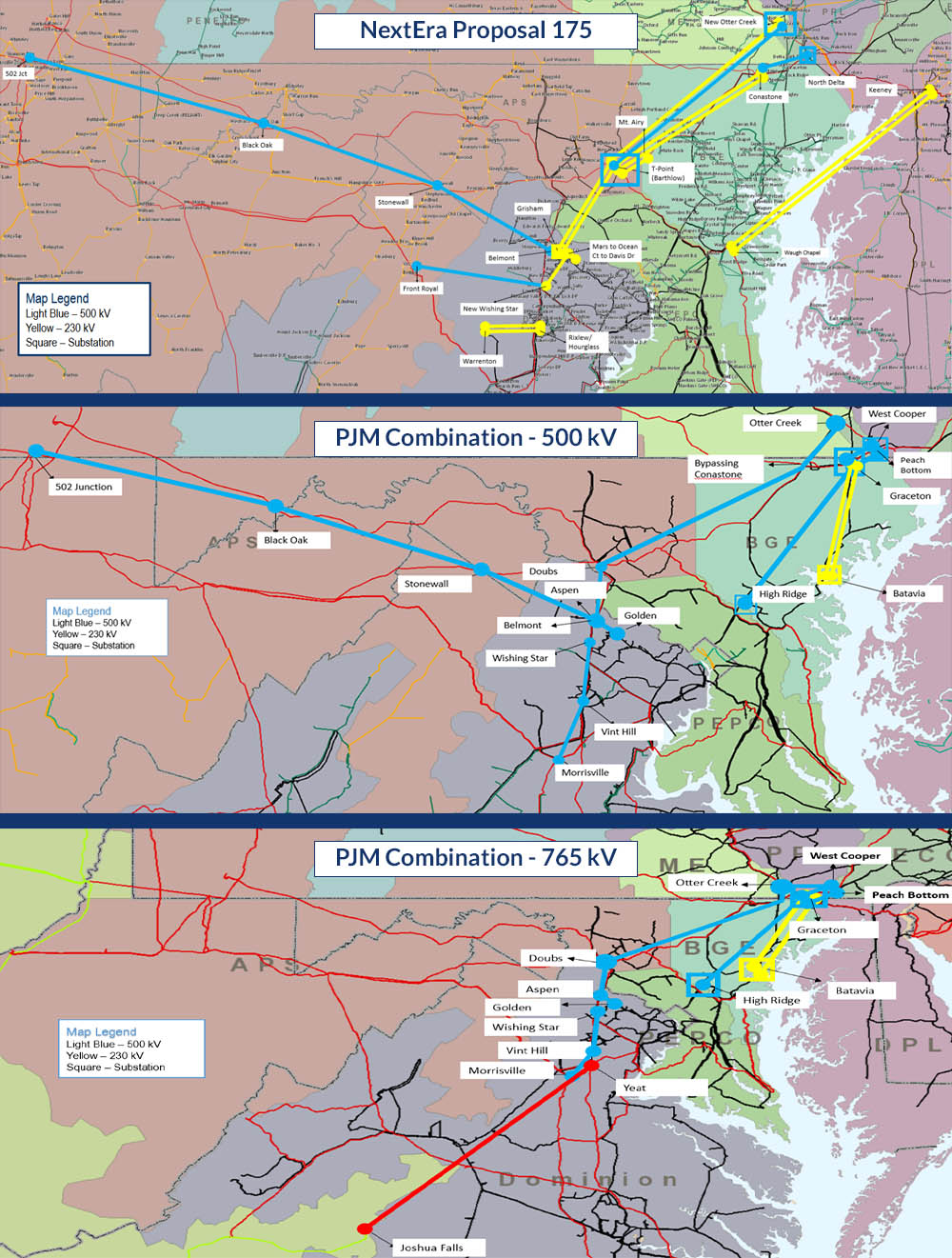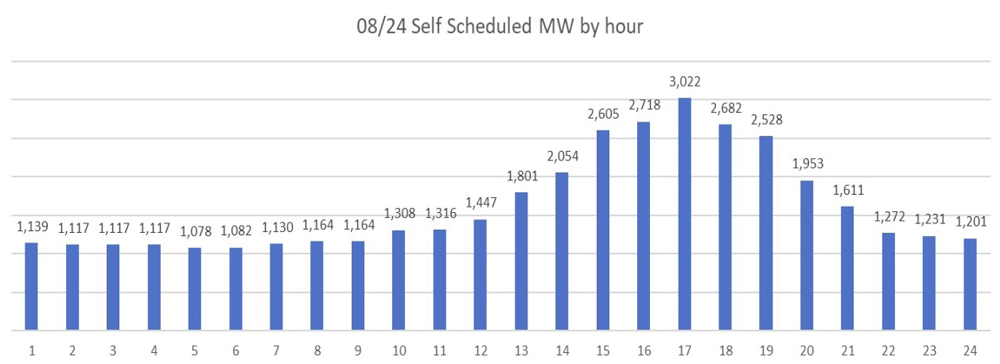Multi-schedule Modeling in Market Clearing Engine
VALLEY FORGE, Pa. — The PJM Market Implementation Committee endorsed two proposals intended to include multi-schedule modeling in the market clearing engine (MCE) without causing performance impact because of the large number of additional offers the engine would have to consider. (See “Discussion Continues on Multi-schedule Clearing in The Market Clearing Engine,” PJM MIC Briefs: Sept 6, 2023.)
PJM’s proposal, which would create a formula to select the offer expected to produce the lowest total dispatch cost and forward only that offer to the MCE, received the greatest amount of support and will be considered the main motion before the Markets and Reliability Committee. A joint PJM and GT Power Group proposal was also endorsed by the committee and would select resources’ cost-based offers when they fail the three-pivotal-supplier (TPS) market power test and their parameter-limited offers during emergency conditions.
The problem statement that PJM brought forward in December 2022 states that each resource schedule entered into the MCE is modeled as a logical resource. When paired with the number of configurations that combined cycle and storage resources can enter schedules for, the introduction of multi-schedule modeling would cause an exponential increase in the number of logical resources the engine would have to process, potentially leading to untenable increases in computational times. All five proposals aimed to reduce the number of schedules that are submitted to the MCE prior to the optimization process.
Three proposals from the Independent Market Monitor, including one jointly sponsored with GT Power, failed to receive majority support. During first reads in September, Deputy Monitor Catherine Tyler told the MIC that the proposal’s goal was to solve the performance issues that multi-schedule modeling is expected to pose while also improving market power mitigation. She also argued that the PJM proposal could be dispatched on schedules that don’t match the most cost-effective fuel and that it would allow generators with market power to raise energy prices by using high markups and to extract uplift using inflexible parameters.
The first Monitor proposal would combine the lowest offer points and most flexible parameters from resources’ price- and cost-based offers under certain scenarios; impose offer capping and parameter limits to all resources that fail the TPS test; and apply parameter limits to capacity resources during emergencies. The Monitor’s second package would do the same as above but would use the status quo rules for resources with multiple cost-based offers.
The joint Monitor and GT Power proposal would commit resources that fail the TPS test and have multiple offers to operate based on the fuel that the generation owner expects to use in each hour of the day. Tyler said that any generators not submitting the most efficient offer may be considered to be engaging in market manipulation.
Creation of Fifth CONE Area Endorsed
Stakeholders endorsed a joint proposal from PJM, the Monitor and E-Cubed Policy Associates to create a fifth cost of new entry (CONE) area for the Commonwealth Edison region.
The proposal is intended to allow the CONE for the ComEd region to reflect the expected shortened lifespan of the reference resource, a combined cycle unit, under the Illinois Climate and Equitable Jobs Act. (See “Fifth CONE Area Under Consideration,” PJM MRC/MC Briefs: Sept. 20, 2023.)
PJM’s Gary Helm stated that the new CONE value for ComEd will be $201,714/MW-year, compared to $197,800/MW-year in CONE area 3, from which the existing area would be broken out of under the proposal. All other variables, such as labor costs, will remain the same, but they may be revised under the next Quadrennial Review.
E-Cubed had previously sponsored a proposal to create an automated process for adding new CONE areas when local or state factors affect key parameters of the reference resource, such as asset lifespan, or when they may imply a different reference resource than the one PJM has designated.
Capacity Obligations for Forecasted Large Load Adjustments
Stakeholders approved an issue charge brought by Dominion Energy and American Electric Power to consider changes to how capacity obligations are allocated following a large change in the load in one or a small number of load-serving entities.
Josh Burkholder of AEP said that the capacity obligation accounting for such a change in load is allocated across all entities within the zone, regardless of whether they are under fixed resource requirement (FRR) or Reliability Pricing Model (RPM) rules.
Unlike standard changes in load, the problem statement argues that large load customers, such as data centers, tend to be geographically concentrated in one region that can be tied to one or a handful of LSEs. It states that the issue is isolated to forecasted loads, as once they come online, their actual consumption is accounted for in the capacity obligation assigned to the LSE.
The issue charge was revised following a first read at last month’s MIC to revise the focus from being on large load additions to adjustments, to reflect that forecast reductions in load can have a similar effect. The scope was also clarified to include the assignment of obligations between RPM and FRR markets as well as individual LSEs. The stakeholder process was also changed to the full consensus-based issue resolution (CBIR) process, instead of the abbreviated CBIR Lite pathway, and the estimated timeline was revised to four months with the goal of having changes that can be implemented in the 2025/26 Base Residual Auction (BRA) if feasible.
Burkholder said the issue charge would not change the settlements process but instead focus on how capacity obligations for identifiable forecast large loads are allocated. Settlements are in-scope only to avoid any unintended consequences.
Calpine’s David “Scarp” Scarpignato made the case that the issue extends beyond load changes in regions served by RPM entities resulting in changes to the capacity obligation for FRR resources, saying that a significant change in load within an LSE whose footprint lies in multiple transmission zones can result in that impact bleeding across zones.
PJM Reviews Board of Managers CIFP Letter
PJM Vice President of Market Design and Economics Adam Keech said the RTO is on track to make a FERC filing by the Oct. 13 deadline the Board of Managers set in a letter announcing a slate of capacity market changes resulting from the Critical Issue Fast Path (CIFP) process it initiated in February. (See PJM Board Releases Outline of Capacity Market Changes.)
To meet the aim of having changes that can be implemented for the 2025/26 BRA, Keech said FERC approval would be required by early February to leave time for pre-auction activities and for market participants to prepare. Portions of the changes being proposed involve processes that begin toward the start of the pre-auction activities, meaning an order is needed before work can substantively begin.
Keech said two approaches that PJM could take when drafting the filing would be to either ask the commission to delay the auction until an order is released, or to state that the RTO will begin with pre-auction activities under the current rules unless directed to do otherwise. Any delay to the 2025/26 auction would likely mean changes to the timeline for subsequent auctions as well because of how tightly packed together they are.
PJM is also discussing whether it is best to proceed with a single filing encompassing all of the proposed changes, or to break it into two filings, grouping together changes that staff believe would have to be made as a package. Keech said he believes that changes to performance assessment intervals would have to be linked with the market seller offer cap because there’s a connection between the two with the eligibility to receive Capacity Performance bonus payments.
PJM Senior Counsel Chen Lu said staff considered waiving the RTO’s right to preclude the commission from conditioning approval of a Federal Power Act Section 205 filing under NRG Power Marketing v. FERC, but they determined that not all of the components of the proposed changes are severable.
Keech said the board is currently deliberating the direction and best forum to hold further discussions of issues that are not expected to be resolved through the filing, such as a seasonal capacity market.











